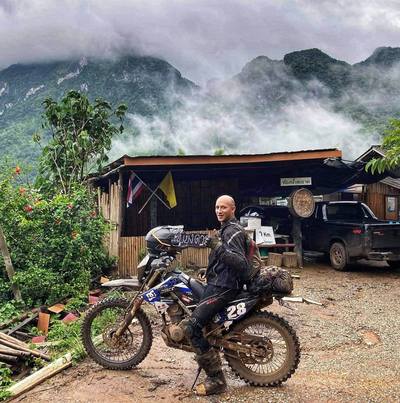Touring a motorcycle is one of the most amazing experiences in life. Whether you are a commuter or online casino Canada gamer looking for something a bit different, or a pleasure seeker, riding a motorcycle is a great way to spend your days. Before you start planning a trip to the mountains or the beach, you'll need to make sure that you have the necessary equipment to ride safely. One of the most important factors that you'll need to consider is a helmet.
Motorcycle helmets are significantly different from those used for dirt bikes and motocross. Compared to those used for dirt bike riding, those designed for the motorcycle have a more round shape, and they don't need added chin protection.
What Will the Helmet be Used For?
If you're planning on riding a lot or taking weekly road trips, a high-end model may be just what you need to provide you with better dynamics and a more comfortable ride. Comfort and versatility are important when it comes to riding long distances or touring.
Most motorcyclists join groups to enhance the experience of riding. Having a helmet with built-in communication features is important for group riding. Most helmets come with blue tooth systems, though there are a few exceptions. A high-performance model is usually rated for track use.
Helmet Shell Material
The type of material used in the construction of a helmet affects various aspects, such as its weight, comfort, and safety rating. Most motorcycle helmets come with a layer of EPS foam.
The weight of a helmet can vary depending on the model. It's important to ensure that the helmet is properly fitted, as it should distribute the weight evenly around the shoulders and head. Modular models tend to weigh more than Full Faces due to the apparatus used to flip up their visors.
Technological advancements have made helmets even better. Features such as wind reduction measures, integrated sunshades, and communication capabilities make riding more enjoyable.

Additional Safety Features
Technological advancements have made motorcycle helmets safer.
Features such as the cheek pad system, enabling medical personnel to access an injured rider's head, have made removing them easier.
The MIPS system, which is a new type of technology in the helmet industry, is designed to reduce the rotational forces caused by certain impacts.
How to Measure Your Helmet Size
Having the proper helmet greatly affects the outcome of an accident. Before you start shopping for a motorcycle helmet, you must determine your head size. Having an oversized helmet will not protect your head properly.
To measure, wrap a soft tape around your head, about an inch above your eyebrows. Position the tape at the top of the head, near your ears, and at the back of the head.
Before you buy a motorcycle helmet, make sure that you compare the measurements of your head with those of the manufacturer. Each brand has its sizing charts, so you'll need to measure correctly to find the one that fits you.
Before you wear it, try it on. Make sure that the helmet is firmly on your head, as it should allow you to feel its impact on your head. A properly fitted helmet will take some time to loosen as it is broken in.

If your fingers or the helmet move between your head and the surface of the helmet, you may require a smaller size. Ideally, the helmet should fit snugly around your head without any pressure points. If you wish, the cheek pads may be adjusted for a better fit.
Also, you must determine the head shape of the individual. A properly-sized helmet will fit comfortably on one person, while one might feel uncomfortable on another.
Shapes of Helmets are:
Long Oval
The long oval shape is typically associated with a more oblong head. It has a narrow side-to-side profile and a long front-to-back segment.
Intermediate Oval
The Intermediate Oval is similar to a round head shape. It features a wider side-to-side segment and shorter front-to-back. Most helmet companies make these types of headgear.
Round Oval
The round oval shape is similar to a traditional oval head. It has a longer side-to-side segment than the Long oval.
ABOUT THE AUTHOR
Olivia Poglianich
Content Strategist
Olivia Poglianich is a nomadic brand strategist and copywriter in the motorcycling and adventure space who has worked with brands such as Visa, Disney and Grey Goose. Her writing has taken her all over the world, from a Serbian music festival to a Malaysian art and culture event. Olivia is a graduate of Cornell University and is often writing or reading about travel, hospitality, the start-up ecosystem or career coaching. Her latest interests are at the intersection of web3 and communal living, both on and offline.






